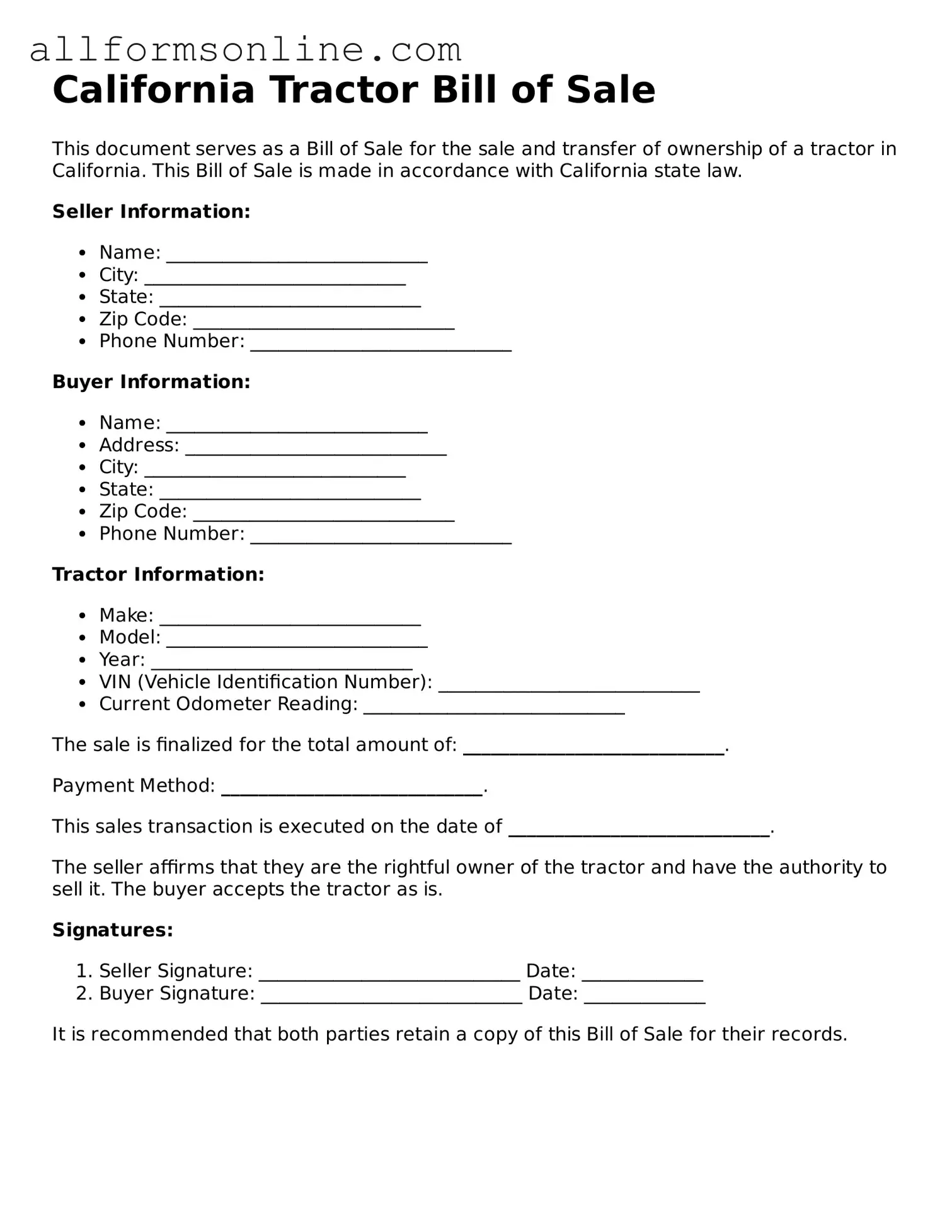What is a California Tractor Bill of Sale form?
The California Tractor Bill of Sale form is a legal document used to transfer ownership of a tractor from one party to another. It serves as proof of the transaction and includes important details such as the buyer's and seller's information, the tractor's make, model, year, and Vehicle Identification Number (VIN).
Why do I need a Bill of Sale for my tractor?
A Bill of Sale is essential for several reasons. It provides a record of the sale, which can be useful for tax purposes. It also protects both the buyer and seller by documenting the terms of the transaction. Additionally, it may be required by the California Department of Motor Vehicles (DMV) for registration purposes.
What information is required on the form?
The form should include the names and addresses of both the buyer and seller, the date of the sale, a description of the tractor (including make, model, year, and VIN), the sale price, and any conditions of the sale. Both parties should sign the document to validate the transaction.
Is the Bill of Sale required to register my tractor in California?
Yes, the Bill of Sale is often required when registering a tractor in California. The DMV may ask for it as part of the registration process to verify ownership and the details of the sale. It is advisable to check with your local DMV office for specific requirements.
Can I create my own Bill of Sale form?
Yes, you can create your own Bill of Sale form as long as it includes all necessary information. However, using a standardized form can help ensure that you don't miss any important details. There are templates available online that can guide you in creating a comprehensive document.
What should I do after completing the Bill of Sale?
Once the Bill of Sale is completed and signed by both parties, keep a copy for your records. The buyer should present the form to the DMV when registering the tractor. It is also a good idea for the seller to retain a copy as proof of the sale.
